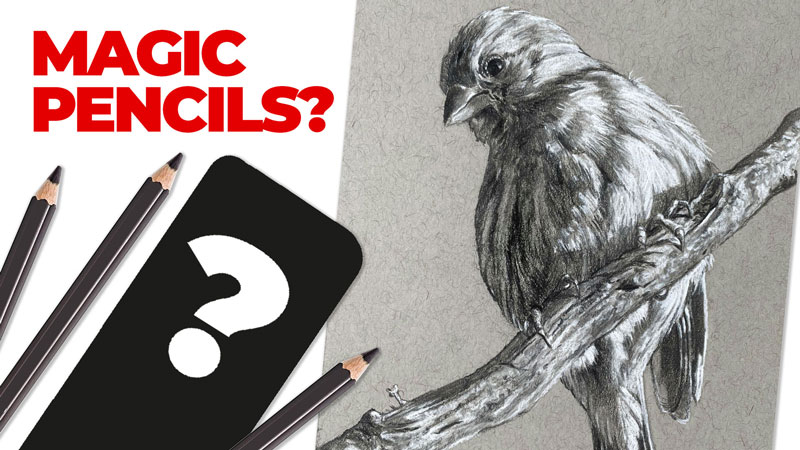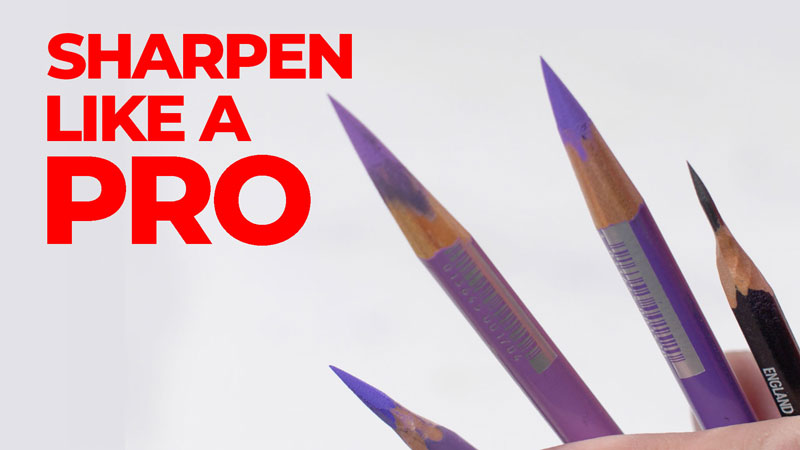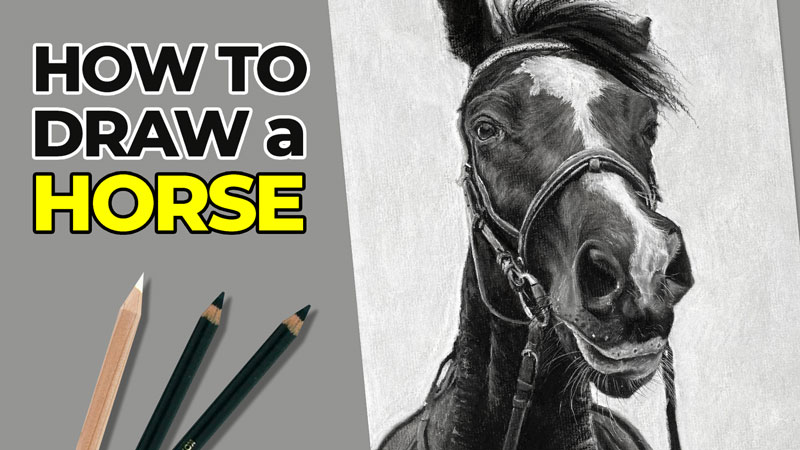Smooth Applications of Graphite Without Pencil Strokes
Many times with graphite drawings, we want to create smooth transitions of value or simply areas of smooth applications where you don’t see the pencil lines.
Most of us simply adjust the amount of pressure we place on the pencil and then use a blending tool such as a blending stump to soften the applications. And while this technique works okay, it’s often inconsistent and it’s also time consuming. Well, there is a better way – a secret weapon, if you will, to get these same effects.
See also: 6 Reasons to Draw on Toned Paper
The Secret Weapon – Powdered Graphite
This interesting form of graphite is called powdered graphite. As the name implies, it’s simply pulverized graphite. Pictured below is powdered graphite manufactured by General’s.
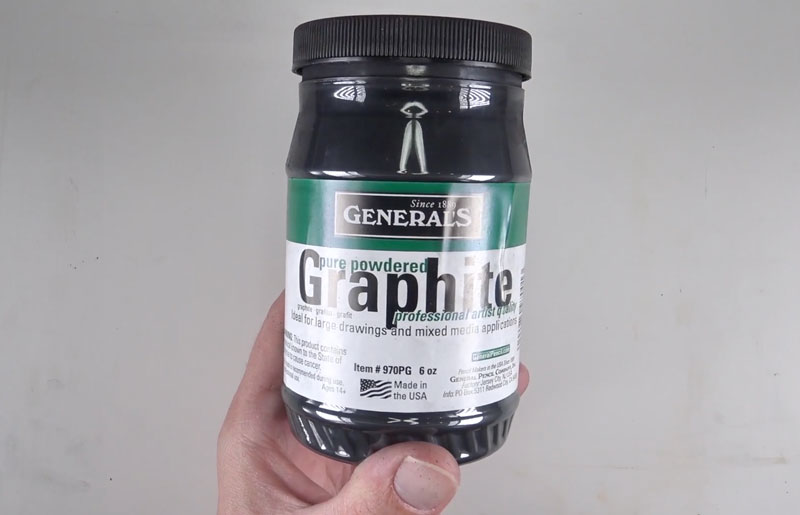
Making Your Own Powdered Graphite
Powdered graphite may be difficult to find a local art store but we can make our own. Just use a sandpaper pad and rub some soft graphite over the surface. Then using a brush, we can lift up the powdered graphite that we’ve created and apply it to the surface.
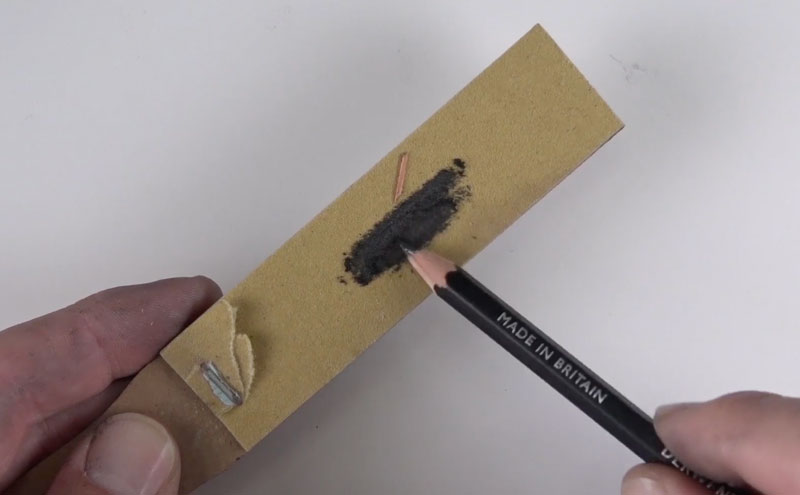
Applying Powdered Graphite
You’ll notice that your initial applications of powdered graphite are quite soft and light, but we can revisit the powdered graphite and put an additional layer, gradually darkening the value.
If you choose to use the manufactured powdered graphite, it’s best to put it in a smaller container. I like to use the lid from the container that contains the powdered graphite and use the brush to apply it to the surface. As we rub the brush over the surface, less of the graphite remains in the brush, making a lighter mark. We can keep revisiting the powdered graphite and adding additional applications to make the value slightly darker.
Powdered Graphite Usage
All of the remaining excess powder that remains on the surface can be blown away gently or brushed away with a drafting brush. Powdered graphite can also be applied with a cotton swab or a tissue paper.
Just like with any drawing medium, the surface of the paper plays a role in the application and look of the powdered graphite. The texture of the paper will affect the appearance of the powdered graphite.
One method of using powdered graphite is somewhat like painting. In this particular case, I’ve sketched out the contour lines of the subject.
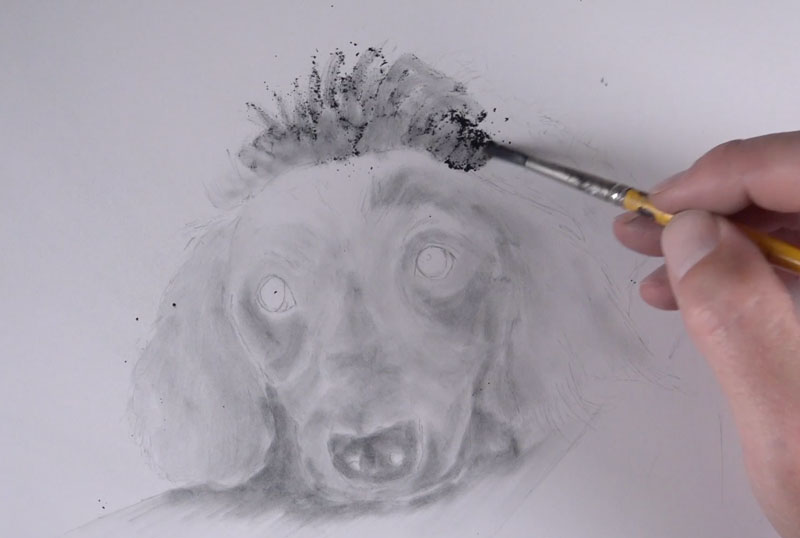
In this particular drawing, I’m adding the powdered graphite much like I would in a painting. I’m just adding bits of value, and if I need a darker value – I apply more layers of the powdered graphite to the surface. Then over the top of my “underpainting” with powdered graphite, I can apply pencil marks with a traditional pencil.
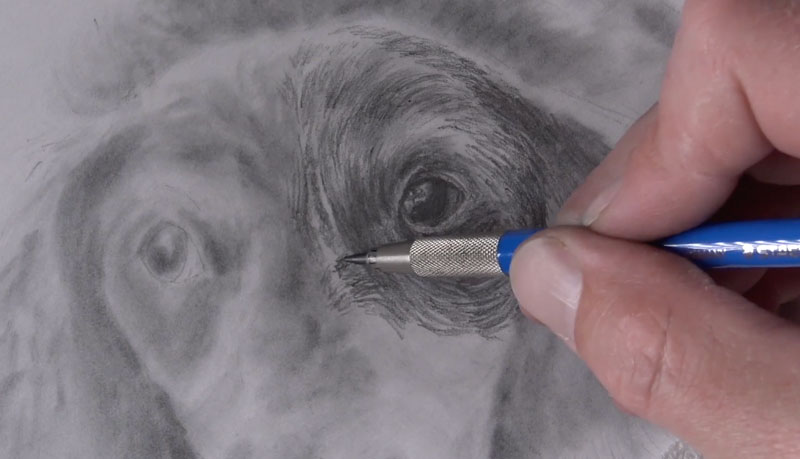
Here’s a look at the finished drawing…
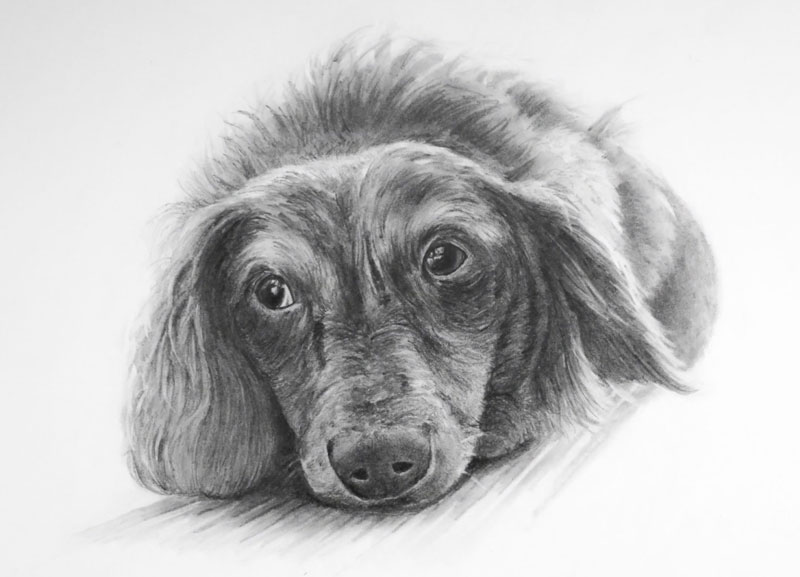
Another way you might choose to use powdered graphite is to create a base value on the surface of a drawing. In this drawing, I again draw the subject using just the contour lines. I apply powdered graphite with a mop brush, but this time I’m applying it over the entire surface. This basically tones the paper, giving me a nice starting value that’s a little bit darker than white. This layer of graphite allows me to erase out some of the highlights and add some of the darker values.
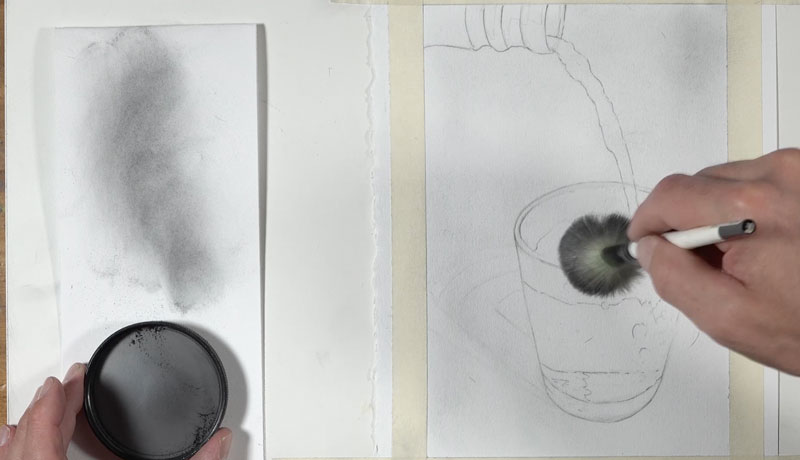
Instead of just adding darker values, I can also remove some of the graphite to create lighter values or tints. This leads to a broader range of value in the final drawing and additional contrast. Essentially we can push and pull the values, adding lighter values by erasing and adding darker values by adding additional graphite. This helps us create a full range of value in the drawing, which leads to a greater illusion of realism.
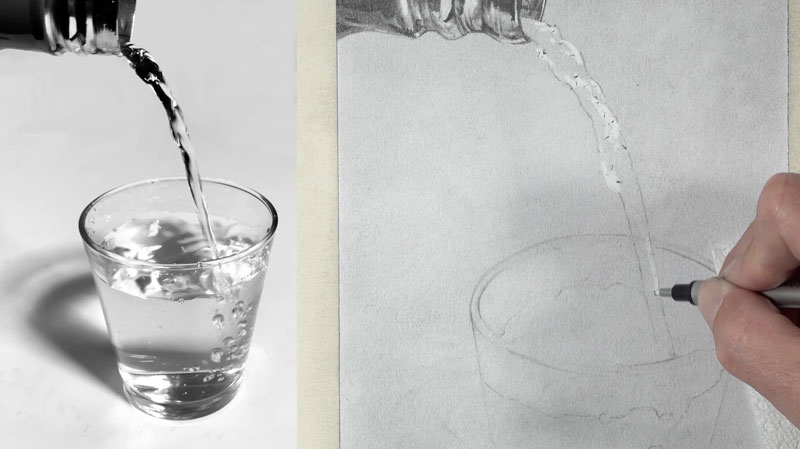
Here’s a look at the finished drawing…
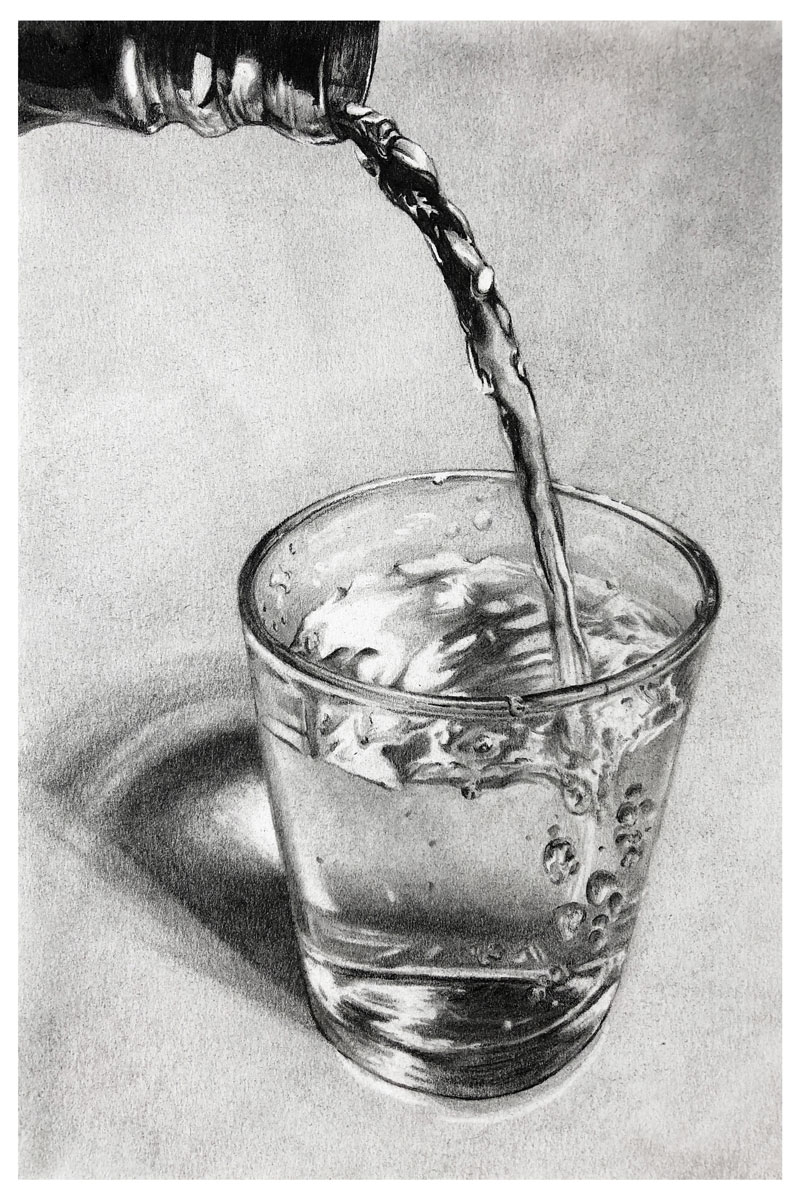
Once our contour line drawing is in place and our picture plane has been taped off, we can apply powdered graphite. This time, I’m going to apply a heavy application to create a darker value to begin with.
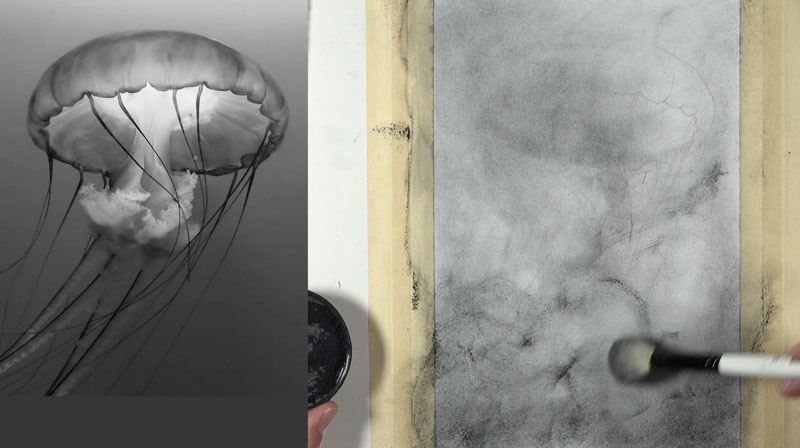
Using the mop brush, I can evenly spread it around on the surface. If I need to blend it additionally, I use a blending stump or a chamois.
I reinforce my lines using a pencil and begin using the eraser and the pencil to create a full range of value. This time, we’re starting with a value that’s closer to the middle of the value scale. Again, this will lead to a greater illusion of realism thanks to a broader range of value. You can appreciate how important the eraser is as a mark making tool when we use powdered graphite in this manner.
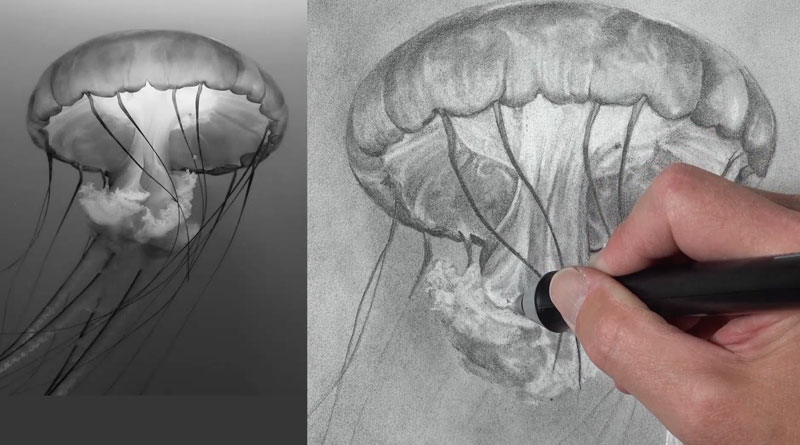
I love using an electric eraser as well, and this surface – Stonehenge paper – is very tough and won’t tear when we use an electric eraser.
When the drawing is complete, we can carefully remove the tape away, revealing a nice sharp border. Here’s a look at this finished drawing with powdered graphite…
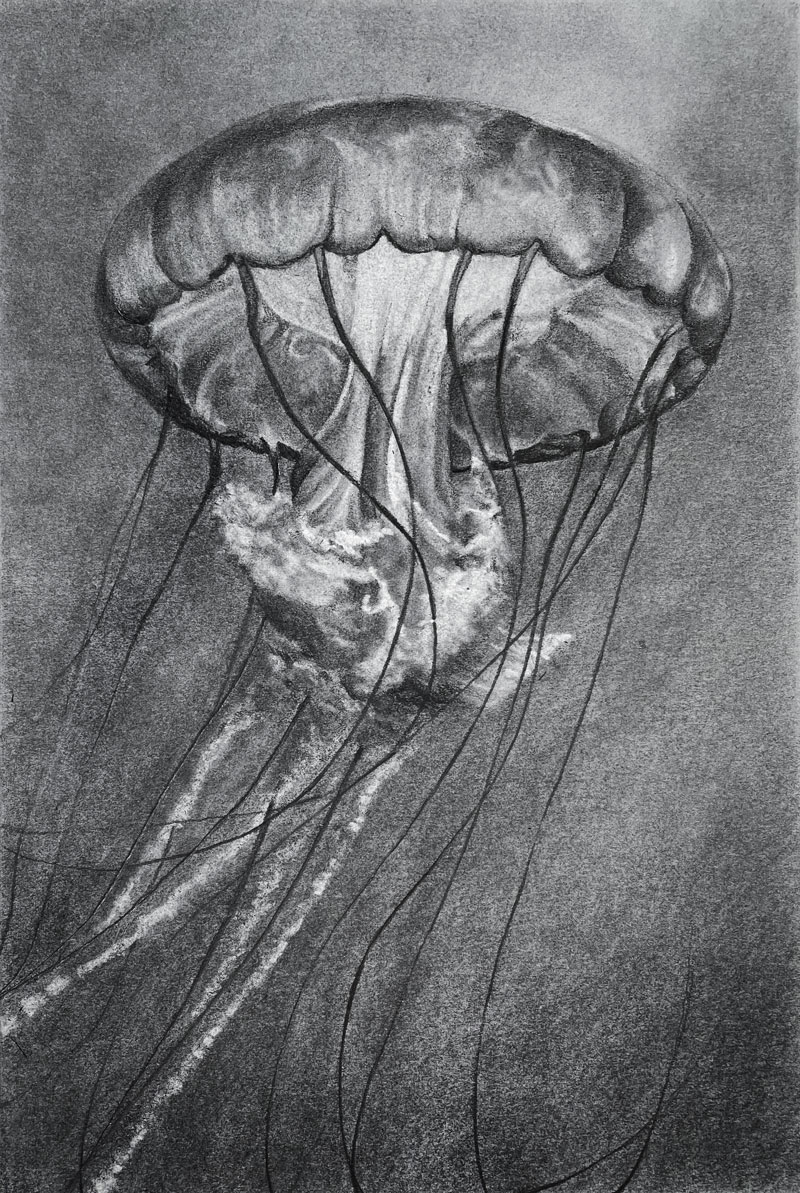
Powdered Graphite – The Secret Weapon – Conclusion
Powdered graphite allows the artist to create smooth transitions of value without visible pencil strokes. It also saves time in many cases. Perhaps the most important benefit is how powdered graphite encourages the use of a full range of value which ultimately leads to more convincing drawings. Whether purchased or made, powdered graphite is a tool that we can use to improve our drawings.
If so, join over 36,000 others that receive our newsletter with new drawing and painting lessons. Plus, check out three of our course videos and ebooks for free.


